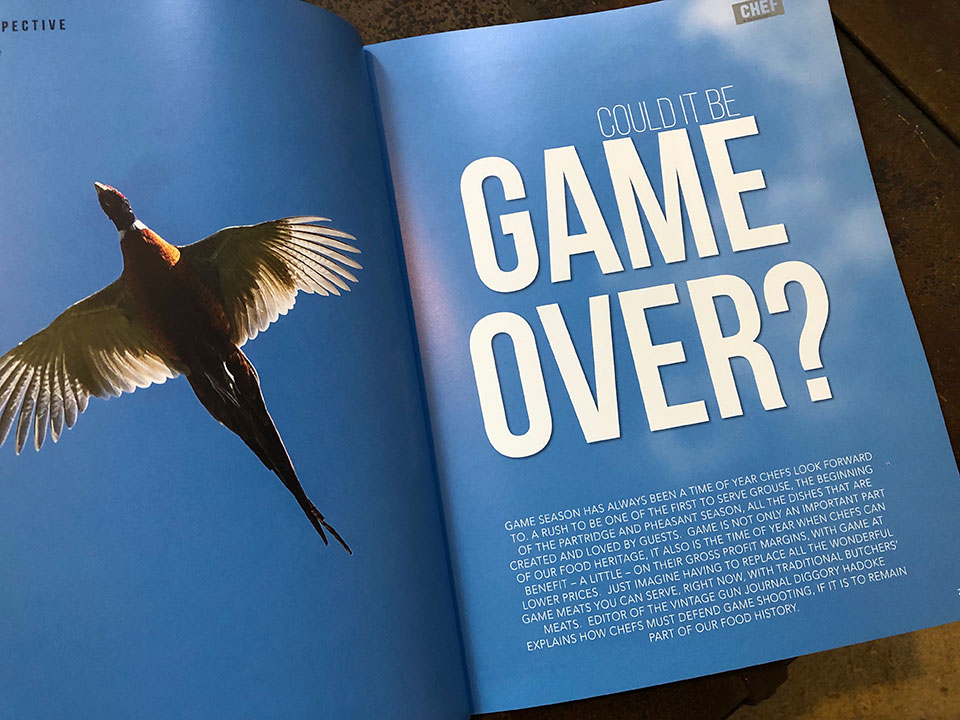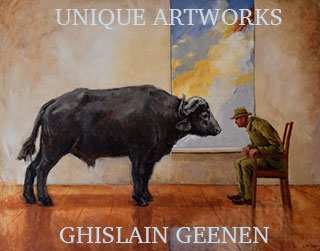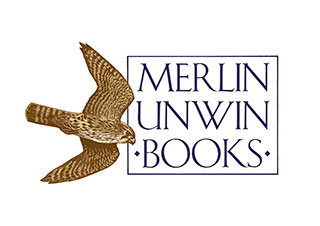Shooting sports in the United Kingdom are under unprecedented attack and chefs need to wake up to the threat before they lose one of their best food resources.
Every autumn, our better restaurants begin to grace their menus with wild food. As some forage for fungi, search the hedgerows for hazel nuts and set the pigs loose to gather truffles, men with guns are harvesting the meat that nature provides. Organic meat, cholesterol free, naturally fed, raised without antibiotics or high-protein meal, free living. Meat that has been part of the British diet since before the advent of farming, when our ancestors were hunter-gatherers.
Naturally harvested wild meat delivers variety and quality into our kitchens. Red Deer taken from the Scottish glens, where sustainably harvested herds have flourished in harsh conditions for centuries. Red Grouse from ancient moorland habitats lovingly managed by gamekeepers so successfully that not only do these birds, which exist nowhere on earth outside the British Isles, survive; they flourish in numbers that provide a sustainable harvest of plump, healthy birds for the table every year. Pheasants, in Britain since Roman times, protected and nurtured in woodlands across the country, free living and incredibly flavoursome - the freest of free range fowl. Pheasants taste like chickens used to taste before they were intensively farmed.
The delicate partridge; the bird of early autumn, providing taste and texture unheard of in domestic birds. For the more adventurous, there will be the occasional teal or pink foot, widgeon or woodcock. Every one free-living, wild, local, seasonal. As if that were not enough, it is cheap to buy.
Imagine the paucity of the autumn and winter menu without the presence of British game meat. You may not have to imagine that scenario if the political agitators gaining so much traction on social media, in the mainstream media and in local government get their way. They want to ban the shooting of wild birds and animals and they are well-financed and media savvy.
It is not only the food industry that benefits from shooting. It brings money into rural communities in the winter, when the average tourist is at home watching Country File on TV. It provides a living for tweed mills, gunmakers, hotels, guest houses, pubs and clothing manufacturers. It provides work for ‘keepers and ghillies, for beaters and pickers-up, for estate workers and mechanics. Shooting provides healthy exercise, outdoor activity, social cohesion in rural communities.
Where pheasants thrive and grouse thrive, so do song birds, waders, ground nesting birds.
Shooting estates manage the ground for the benefit of nature. Where pheasants thrive and grouse thrive, so do song birds, waders, ground nesting birds. The habitat nurtured to benefit game benefits us all. Sit on a train journey and look at the English countryside. Why is it not agricultural crops from sea to sea? Why are the woods and coverts there? Why are areas left to marsh and bog? Why are there thick hedgerows and coppices?
They are there to provide habitat for game. Habitat that has been managed for game for a thousand years. Heather moorland is extremely rare and the UK has 75% of it; the healthiest areas are managed for grouse shooting and even the RSPB’s scientists acknowledge that five times as many lapwing, plover and curlew live on managed moors than live on their own reserves, where shooting is not permitted.
Our remaining ancient forests were preserved when most of those in the country were felled for agriculture as a habitat for deer, so they would flourish and so they could be hunted. The New Forest was planted as a hunting preserve. Without the love for game that hunters have had for millennia, the British countryside would be very different.
Only very recently has hunting become a dirty word. An increasingly urban population, remote from country life and the reality of food production is easy to turn into an anti-hunting pressure group. In the past city dwellers had no opinion, nor any interest in country pursuits. They simply didn’t feature in their lives. Today, social media delivers a graphic image with a provocative meme and tells people what to be outraged about. They helpfully provide a button to click to register ‘outrage’ and there you have it - the illusion that a huge number of people want something they don’t understand to be banned.
We live in a Neo-Puritan age, where the mob quickly moves to stamp out any way of life that they don’t partake in or vaguely dislike the idea of. It is, rightly, no longer acceptable to morally object to homosexuality or cross-dressing, or to be openly hostile to other races but to partake in country sports opens you up to bile and vitriol, the likes of which no other part of society now has to tolerate.
Yet, what is shooting? It is the pursuit of wild animals for the table. Whether you shoot wild geese on the foreshore, cast a fly for trout, stand in the line on a driven pheasant shoot, put ferrets down rabbit holes or stalk the highlands for deer, you are getting meat from nature, for the table.
It becomes sport because it is exhilarating, challenging and offers success and failure. It is not simply killing, as the anti-hunting pressure groups try to mis-represent it.
It just so happens that learning the skills, experiencing the habitat, honing your senses and observing the habits of your quarry, in order to hunt them successfully, becomes a very rewarding experience. It becomes sport because it is exhilarating, challenging and offers success and failure. It is not simply killing, as the anti-hunting pressure groups try to mis-represent it. It is the oldest means by which we get food for the table and being good at it was the difference between our species thriving or becoming extinct.
Throughout human history, hunting prowess has been venerated and hunters respected, their bounty cherished by everyone else. The instinct to hunt and the development of the necessary skills to do it well are hard-wired into humans, hunting is part of who we are.
Yet, we could lose the rights that our forefathers worked so hard to ensure would continue. The reason is that a small but very effective pressure group of extremists has been very successful in generating general antipathy towards shooting sports with a concerted media campaign of dis-information. They hate the idea of shooting and consider all and any losses as justifiable collateral damage in their fight to stop it.
The instigators of this movement are not reasonable people. ‘Sabs’ have moved from intimidating fox hunts to invading grouse moors and pheasant shoots, black clad, armed with blunt instruments and cameras, masked like the terrorists and a 1970 IRA funeral, screaming obscenities and threatening participants going about their legal business on their own land.
Their leaders, like Mark Avery, consider the killing of a crow to be akin to the murder of a human. You cannot reason with these people. You should not be duped by their propaganda. The fact is that where land is kept for shooting, the balance of nature is managed and because predators, like rats, foxes, crows and magpies are controlled, everything else flourishes.
If chefs want to serve wild game, they need to defend it. They need to promote it and they need to be vocal in showing customers how important it is, how good it is and how ethically sourced it is. If the public begin to appreciate that the annual harvest of wild birds and animals is a normal, natural and positive benefit of the way we successfully manage our countryside, they will be less inclined to push that ‘ban it’ button on the next Facebook meme that mis-represents the sports which deliver it into the food chain.
Published by Vintage Guns Ltd on (modified )



